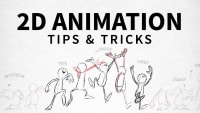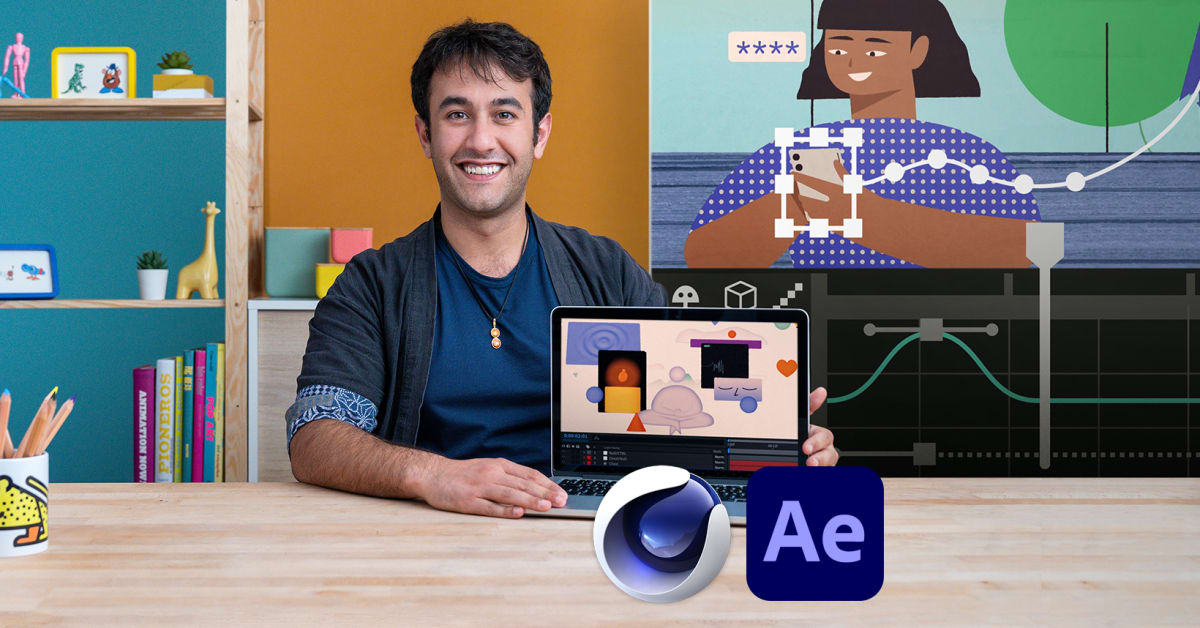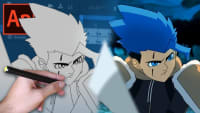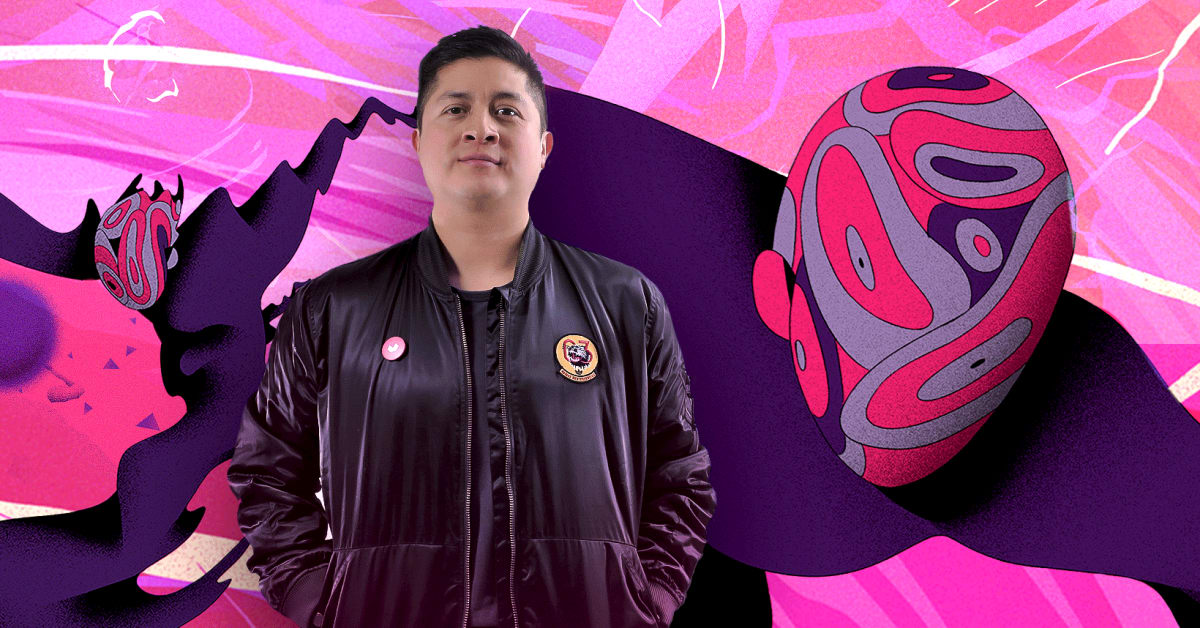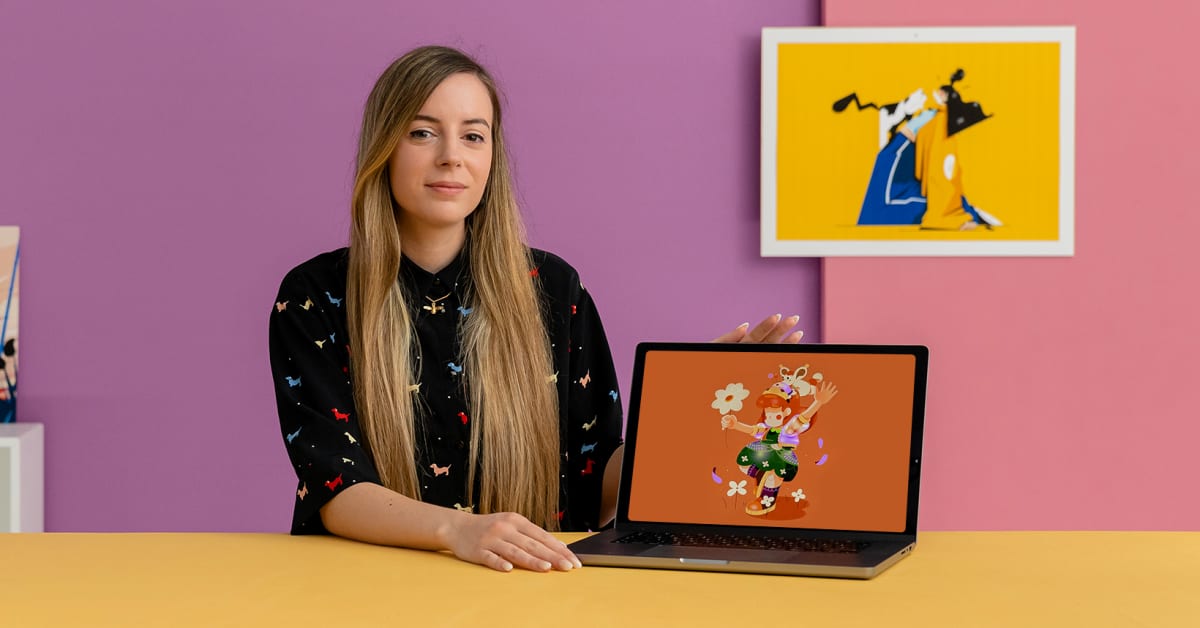Description
An all-in-one course, such as the one found in our library, is one way to learn animation. The other route is on-the-job training, which entails learning tips and tricks as you work. This course will provide you with "on-the-job" experience on a weekly basis. Every Tuesday, instructor Dermot O'Connor reveals a tip or trick used by animation professionals to save time and create more engaging characters. Learn how to use delays, overshoots, and leading gestures to create looser, more realistic movement; draw different mouth shapes for male and female characters; create different walking styles such as staggers; and much more.
Syllabus :
- Loosen the joints
- Loosen the body
- To twin or not to twin
- Head articulation
- Physics: Falling
- Creating staggers
- Cartoony male mouth shapes
- Realistic male mouth shapes
- Pose-to-pose wipes
- Zipping off screen
- Cartoony female mouth shapes
- Realistic female mouth shapes
- Bird beaks
- Stylized mouth shapes
- Elderly mouth shapes
- Breakdown basics turns
- Breakdown basics reactions
- Breakdown intermediate
- Breakdown advanced
- Thumbnail basics
- Thumbnail intermediate
- Thumbnail advanced
- Fabric creases
- Drag basics
- Capes: Basics
- Capes: Intermediate
- Capes: Advanced
- Flags
- Dresses
- Flour sack
- Pantomime
- Pantomime advanced
- Object design
- Objects Moving
- Hair Basics
- Hair Intermediate
- Hair Advanced
- Ball bounce
- Fast Bite
- Wipes Blurs
- Morphs
- Change expression
- Timing basic
- Timing intermediate
- Timing Advanced
- Texture Basic
- Texture - advanced
- Technical
- Traditional animation process
- Torque
- Realistic construction
- Cartoony construction
- Eyeballs - cartoony
- Eyebrows - cartoony
- Eyeblinks - cartoony
- Pupils
- Eyes - realistic
- Center mass
- Crowds
- Overcoming fear
- Overcoming mental blocks
- Breakthroughs
- Avoiding burnout
- The mystery of appeal
- The wheel of fortune
- Relationships matter
- Interpreting dreams
- Animating tails
- Cheating transforms
- Model sheets
- Moving Hold
- Moving Hold Advanced
- Jumping with a push
- Push objects
- Coughing
- Snoring
- Reaching
- Old styles: 1920s rubber hose intro
- Old styles: 1920s rubber hose scene
- Old styles: 1920s rubber hose post
- Loosen with a reversal
- Opposing actions
- Overlap
- Follow through
- Leading actions
- Overlapping large characters
- Drawings, frames, and exposures
- From rough drawings to cleanup
- Cell painting to DIP
- Color model
- Tremor
- Shaky walk
- Camera shots
- Strobing
- Aspect ratios
- Looney Toons: Intro
- Looney Toons: Technical
- Looney Toons: Animation style
- Looney Toons: Walks and runs
- Looney Toons: Scene
- Looney Toons: FX explosion
- Bouncing ball
- Opposing action: Basic
- Opposing action: Intermediate
- Opposing action: Advanced
- Counterpose: Basic
- Counterpose: Advanced
- Overlap: Introduction
- Overlap: Advanced
- Perspective: Introduction
- Perspective: Intermediate
- Plotting arcs
- Figure 8s
- Types of shots
- Camera moves
- Shot transitions
- Staging: Introduction
- Staging: Advanced
- Line of action
- Breaking a single joint
- Breaking joints in a walk cycle
- Plotting arcs and timing in a walk
- Exaggerating the face
- Exaggerating the body
- Exaggerating acting
- Anticipate and overshoot the head
- Primary, secondary, and tertiary actions
- Create personality with leading actions
- Squashing the face for chewiness
- Squashing bodies for animal runs
- Reversing the line of action
- A stretchy jump
- Introduction to anticipation
- Plotting character arcs
- Leading actions on walks
- Fast transitions
- Breaking down a turn
- Introduction to accents
- Advanced stagger
- Squash and stretch
- Examples of counterpose
- Straight-ahead animation
- Pose-to-pose animation
- Different accents
- Correcting arcs and spacing
- Frame rates and logistics
- Wheeled robot
- Animating walks on beats
- Animating candles
- Giant robot
- Tails and reversed curves
- Animating hair and clothing
- Fixing hair and clothing
- Plussing hair and clothing
- Tripod walk
- Dividing in thirds and fifths
- Lighting a scene
- The mushroom cloud
- Ocean waves
- Ocean waves: Advanced
- Drawing budget
- Sweatbox notes
- Layout poses
- Concise naming conventions
- Cheating camera orbits
- When to start a pan
- Sixties TV intro and style
- Sixties TV Structure
- Sixties TV assembly
- Sixties TV post-production
- Cheating depth with color and tone
- Cheating depth of field with blurs
- Cheating depth with motion
- Extreme walks
- Acting with clothing and hair
- Basic smoke poof
- Advanced smoke poof
- Animating a splash
- Constructing animal snouts
- Animating a dress
- Fixing a dress animation
- Animating puppet dialog
- Planning side-scroller game animation
- Creating the artwork and designs
- Zero poses and idle animations
- Walks and hookups
- Jogs, runs, and hookups
- Picking up objects
- Jumping and crouching
- Firing a weapon
- Breaking an animation into pieces
- Hit reacts
- Dies
- Flipping horizontally
- Wins and levels up
- Construction
- Hands
- Advanced hands
- Texture in design
- Straights and curves
- Designing feet
- Dimensional forms
- Using color for story
- Styles
- Simple run
- Weight and mass
- Weight and mass in motion
- The foundations of animation
- Easy vs. hard scenes
- ABC scenes
- Puppets and gestures
- Puppets and arcs
- Boiling a line
- Odd timing on twos
- AA cycles
- ABA cycles
- Don't pop 1: Line and color
- Don't pop 2: Lighting
- Don't pop 3: Camera angle
- Don't pop 4: Composition
- Dos and don'ts
- Making poses read
- Making expressions read
- Timing charts vs. tweening
- Capes basic
- Capes intermediate
- Capes advanced
- Hair basic
- Locked content
- Hair intermediate
- Locked content
- Hair advanced
- Locked content
- Fine-tuning flags
- Punchy dialog
- 1980s TV animation history
- 1980s TV animation techniques
- 1980s TV animation scene
- 1980s TV animation post production
- Color vs. pencil test
- Popping on and off screen
- Foreshortening scene
- Isometric game intro
- Isometric game acting and dialog
- Isometric game turning around
- Isometric game walking
- Bluth-style intro
